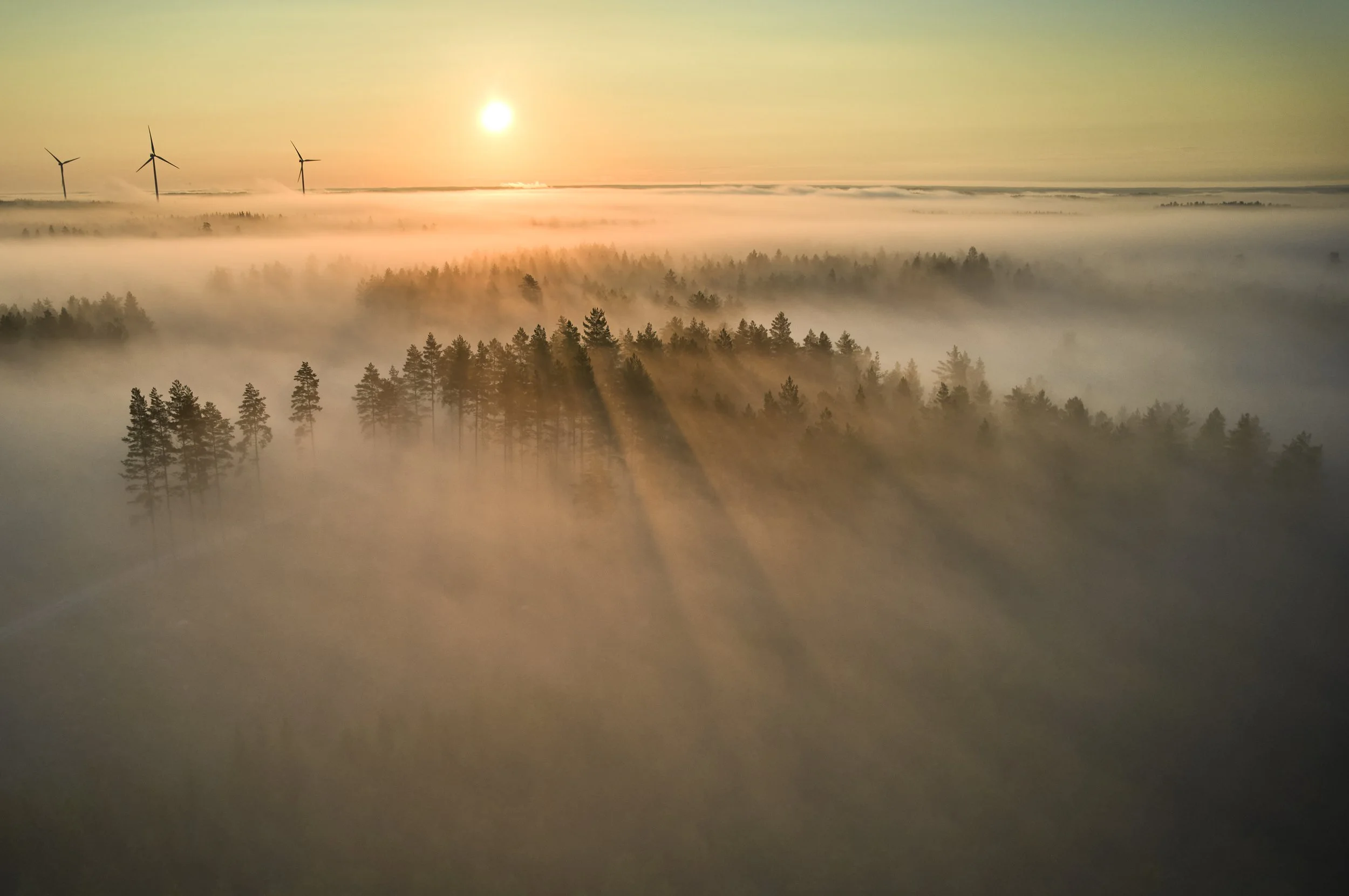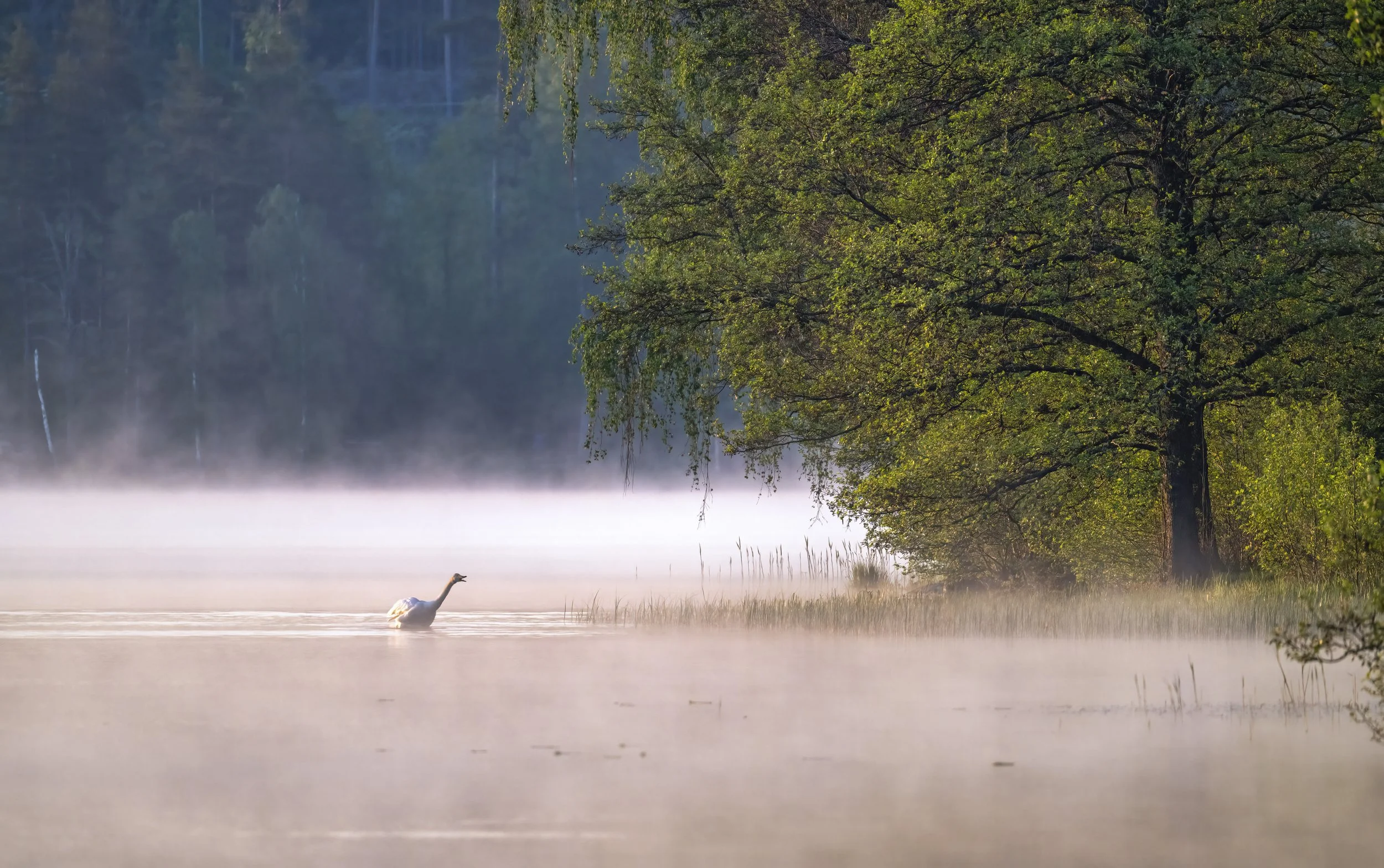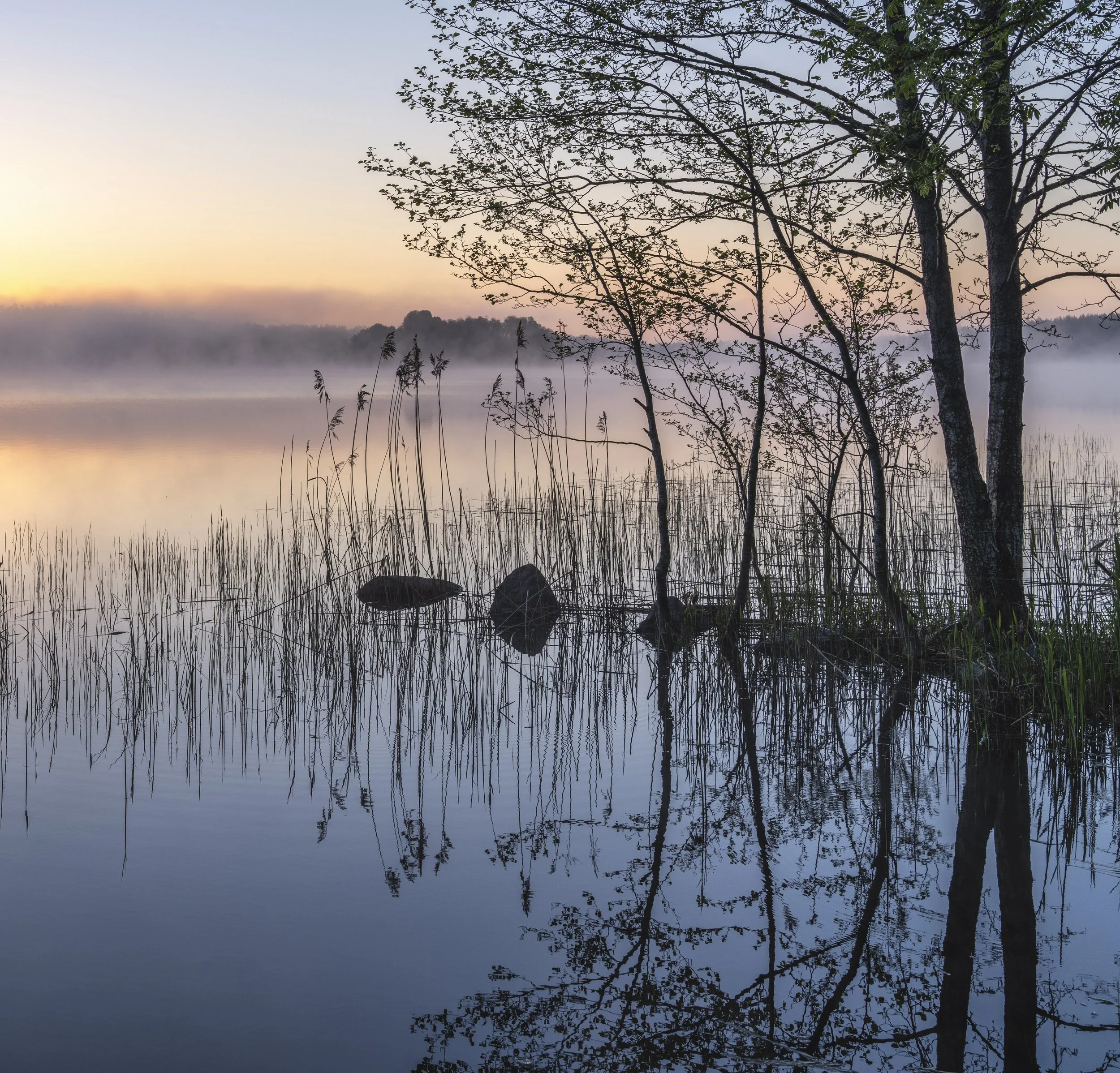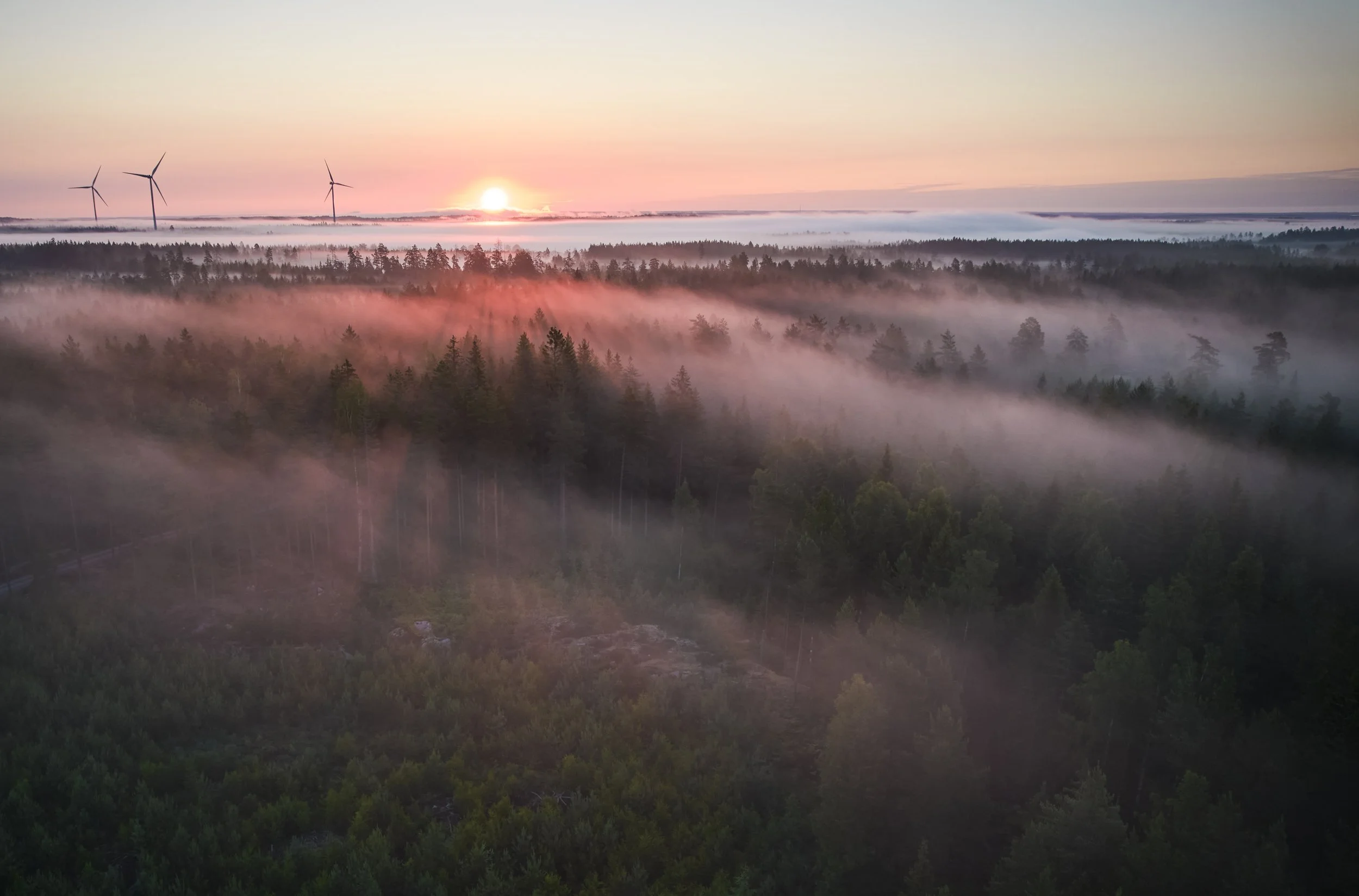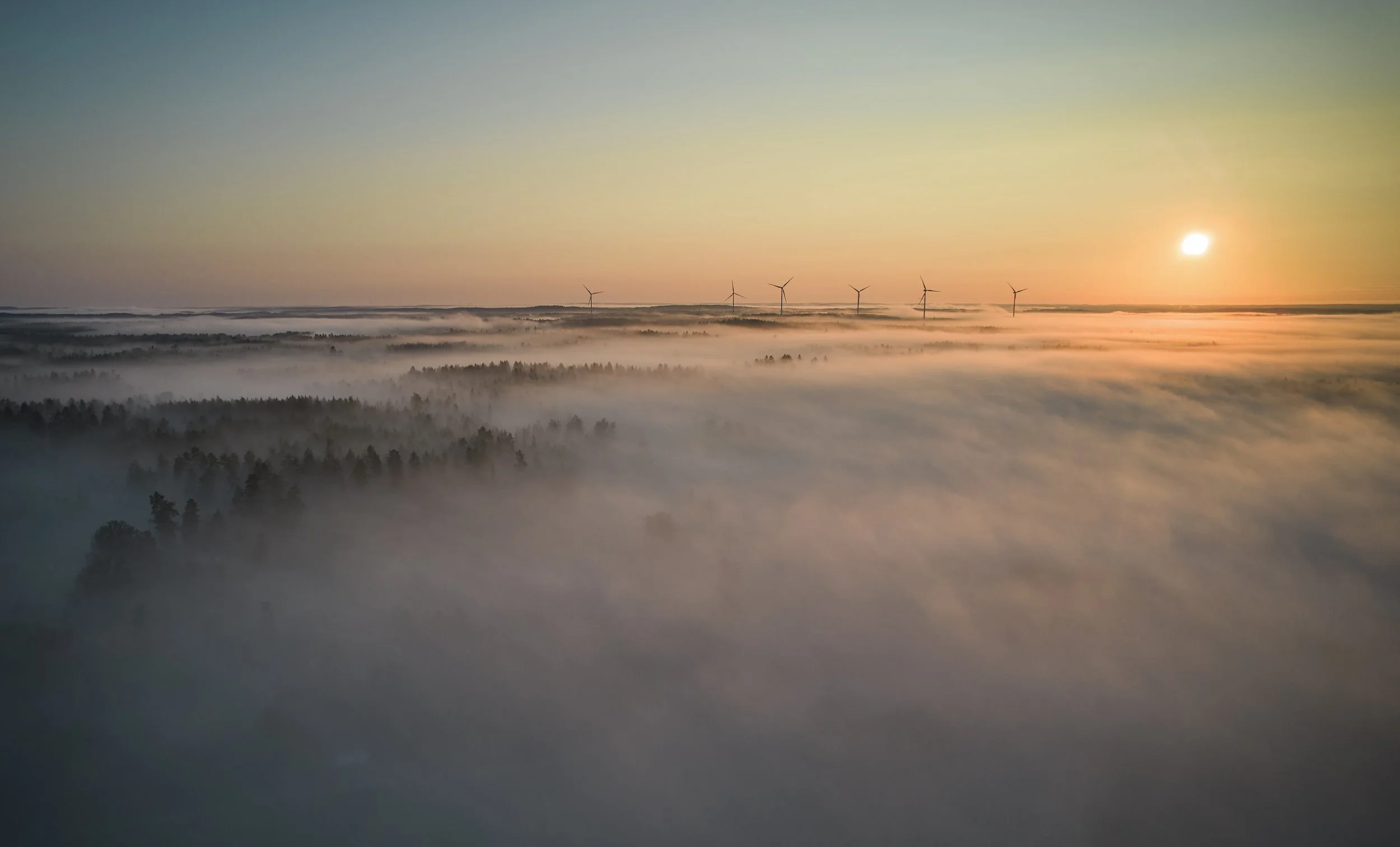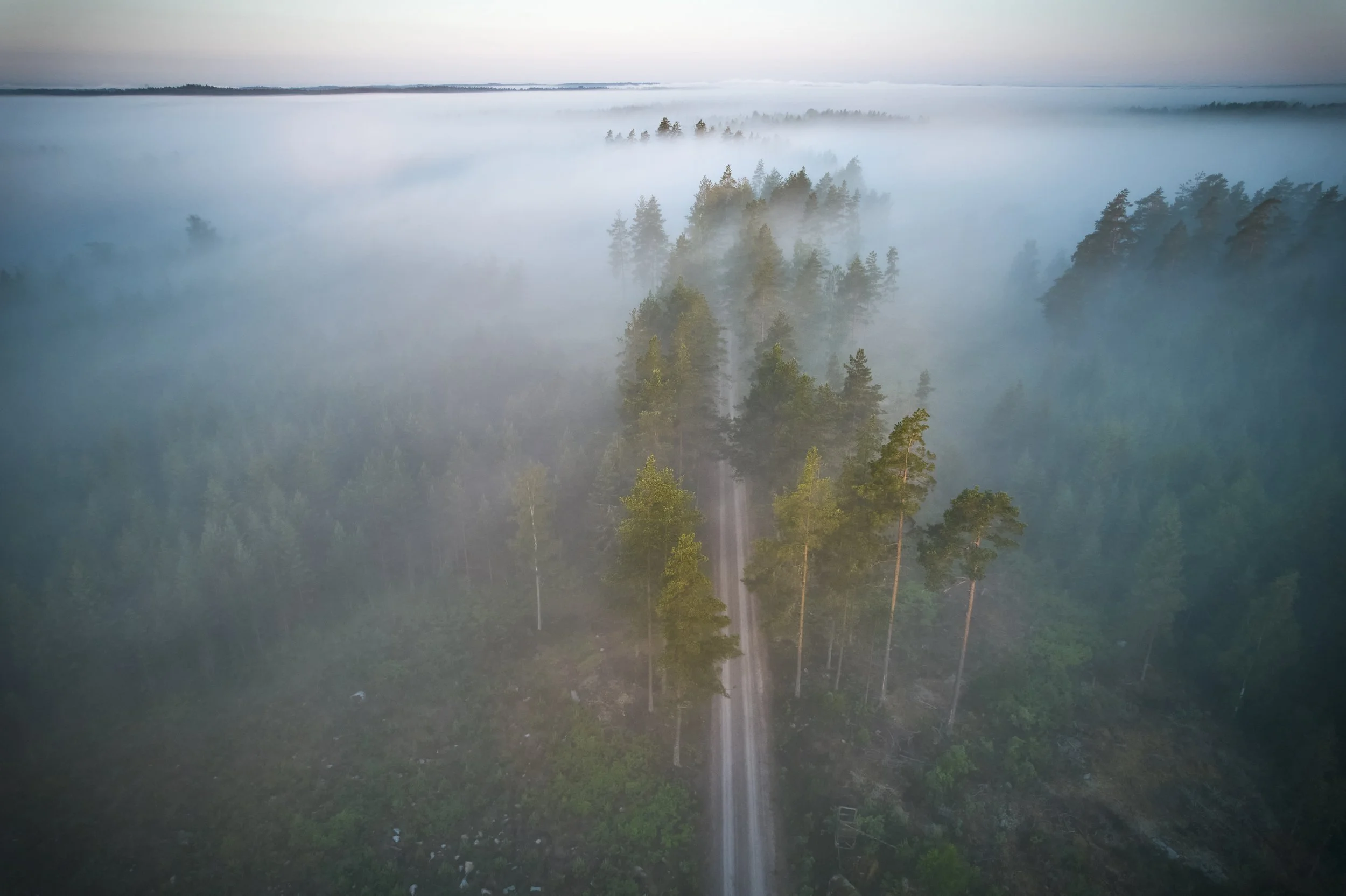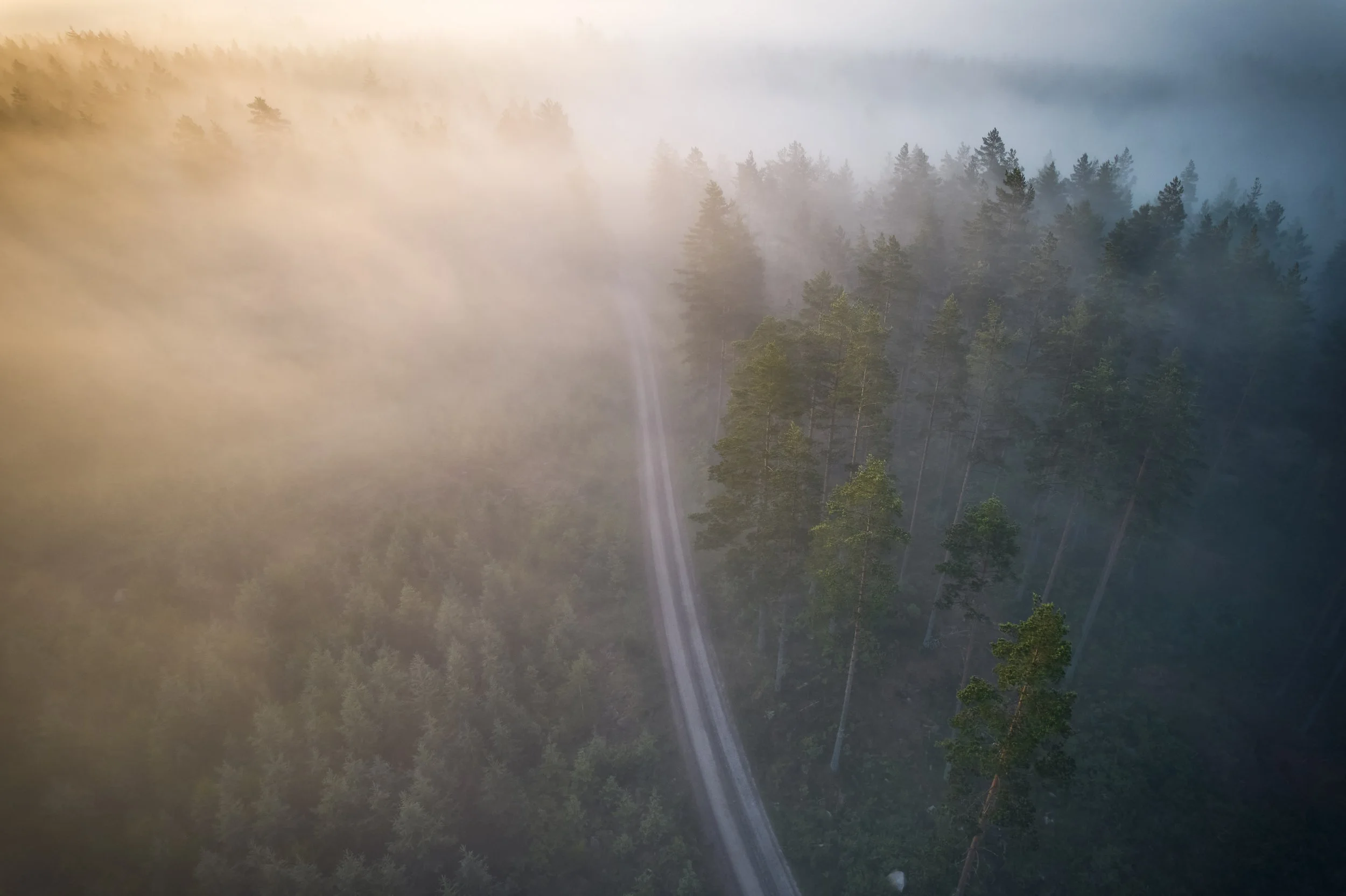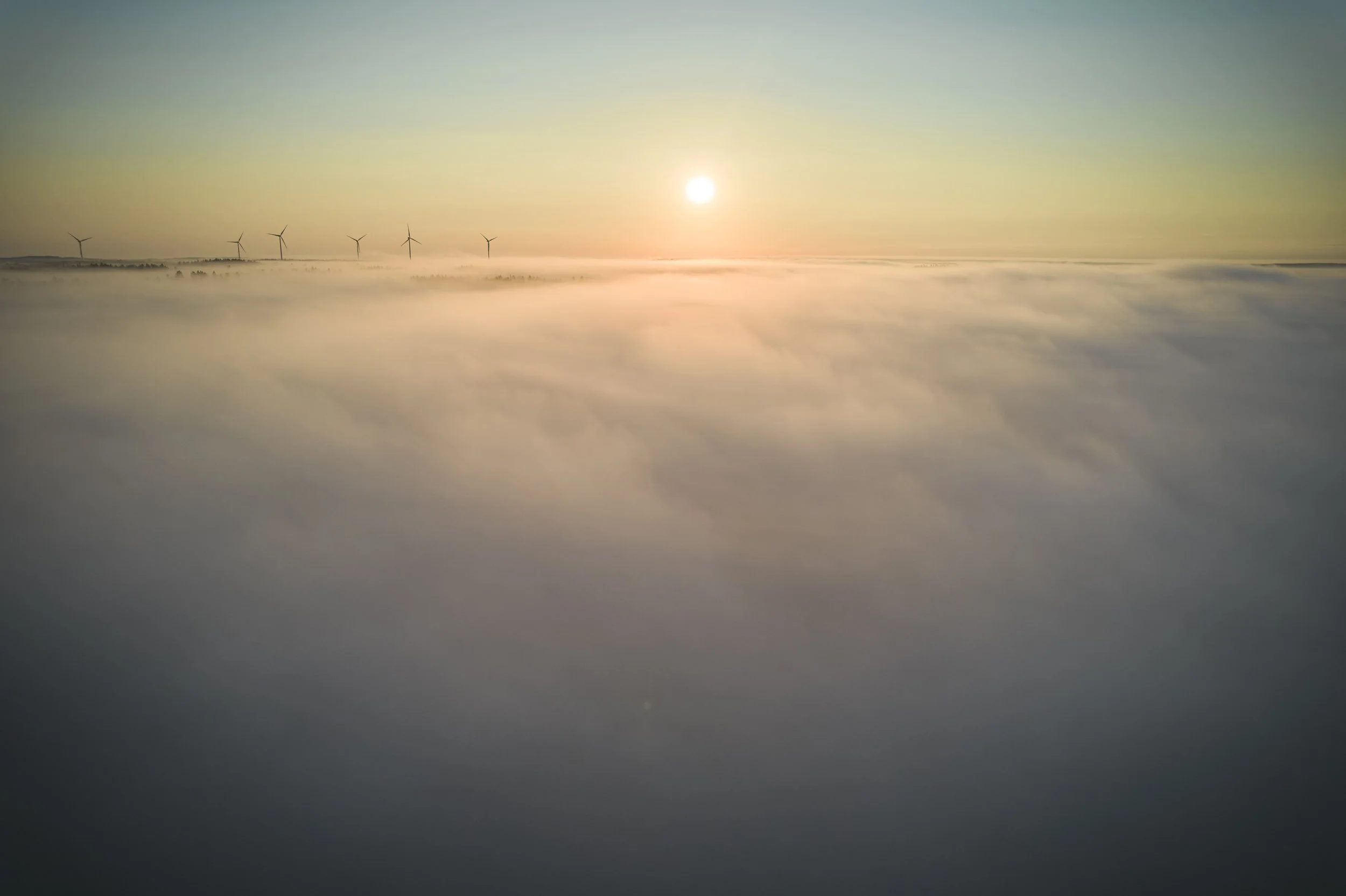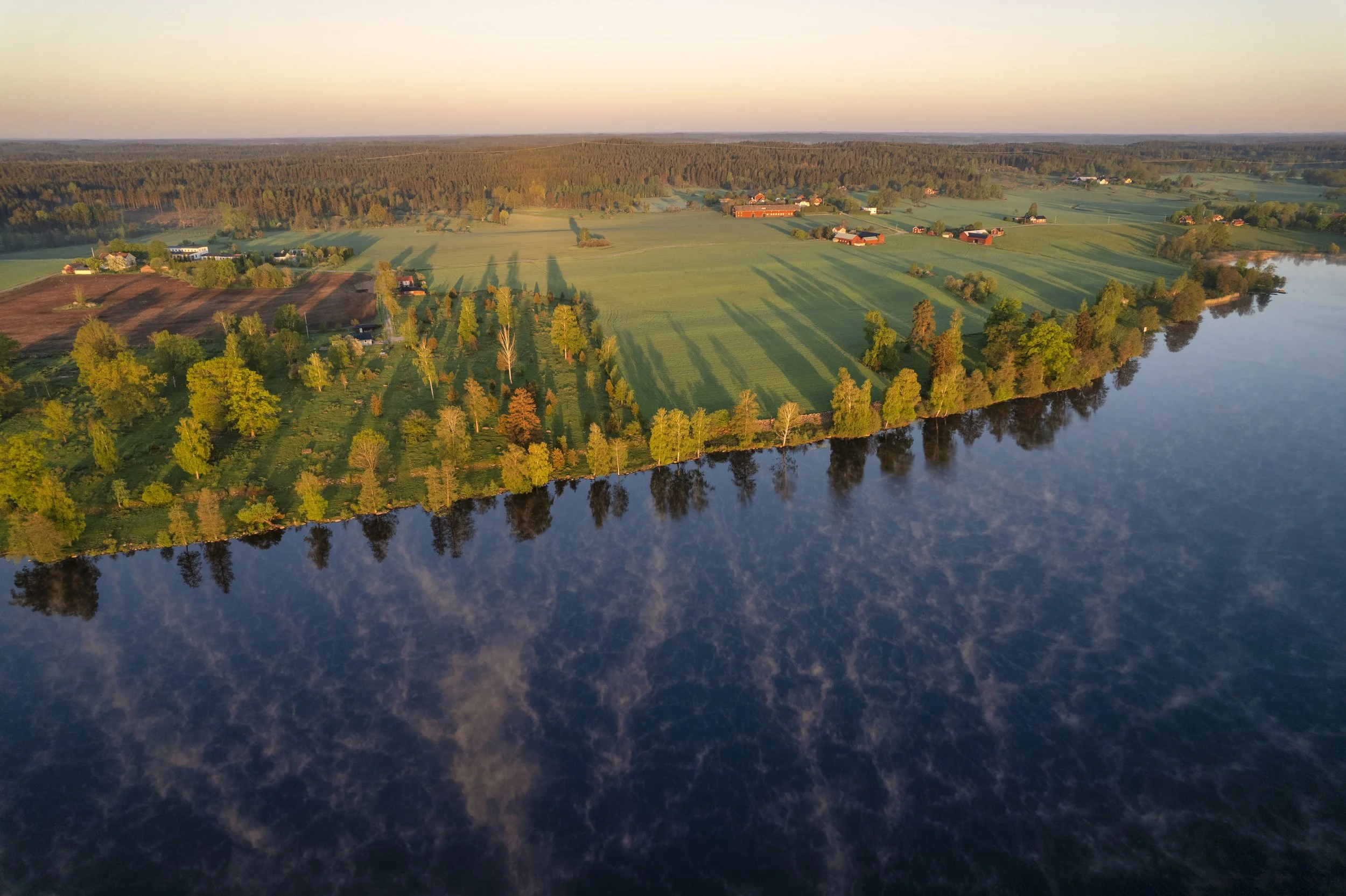Sunrises and sunsets - midsummer photography in sweden
“may every sunrise hold more promise and every sunset more peace.”
Umair Siddiqi
Midsummer sunset across Skaftekulla Björkhem, Sweden by DJI Air 2S
I’ve just returned from a wonderful 6 weeks holiday seeing family in Sweden. Going to such a beautiful, unspoilt country I was keen to take some camera gear and try to capture some of the amazing landscapes.
What to take though? Fortunately we were driving to Sweden from the UK and so the worries of putting valuable camera gear into the hold of an aircraft or completely filling my hand luggage with it was not an issue I had to consider. I had options!
In the end I was able to get quite a lot of equipment into one backpack that fitted nicely into the boot of the car. I selected the following:
Nikon Z8, Nikkor 24-120mm lens, Nikon 14-30mm lens, Tamron 150-500mm lens.
Fujifilm GFX100 ii, Fujifilm 32-64mm lens
DJI Air 2S drone
Insta 360 X4
Insta 360 Ace Pro
I felt this would allow me to cover pretty much all landscape bases as well as use the drone and to capture some aerial views, and do some time lapses along with the Insta 360 cameras.
Mist at sunrise. DJI Air 2S
I don’t know how many readers use drones in their photography but I love using them - considerately. I find they give such a different perspective on the landscape, by getting some elevation, as well as allowing us to capture images that we would not have even dreamed were possible from standing on the ground. This was especially true of my Sweden trip.
I knew from previous trips there, that at midsummer the sun doesn’t properly set and it rises again very early - in our case at about 2:30-3:00 am. I was really hoping that I’d get a chance to capture some beautiful sunrises and sunsets over the lake close to where we were staying - I was particularly hopeful to capture some atmospheric images with mist above the lake, ideally backlit by the sun.
Swan at sunrise, Skaftekulla, Sweden.
Nikon Z8, Tamron 150-500mm lens at 500mm, 1/500 second at F6.7.
Very early on in our stay I was rewarded with heavy mist lying across the lake, just ahead of sunrise. So I dragged myself out of bed at 03:00 am, threw on my clothes, picked up the camera bag I’d prepared the night before, and trudged the few hundred yards down to the shore of the lake. It was so lovely to have such a short journey to get to my chosen location.
The scene that greeted me was stunning - low lying mist drifting across the lake and waterbirds calling and splashing in the half light, hidden by the mist.
Sunrise over Lake Almaren, Skaftekulla, Sweden.
Fujifilm GFX100 ii, 32-64mm lens at 32mm, 1/80th second at F9.
The lake itself had very little easy access to the shoreline, so I based myself on a small jetty, where some boats were moored, and quickly hurried around trying to see what compositions there may be available for me to capture in the dreamed for mist.
It soon became clear, though, that the light levels on the ground were still very low, and the mist actually obscured most of the landscape in front of me. What to do other than turn to the drone to see what the view might be like up above the mist, with the sun rising through it.
The endless forests of Sweden! DJI Air 2S
For once, it turned out to be a good call. The landscape in front of me was transformed, with the glorious soft light of an early sunrise glowing through the mists.
Now the dilemma was what compositions could I find when the drone battery might only last 25 minutes. The approach I take to this is not to rush. If it is allowable then I like to put the drone slowly up to 400 feet and then slowly rotate it to look around the entire landscape and get a feel for it all. Where is the best light? What subjects interest me - it is important to capture them there and then on misty days, as they soon disappear as the sun rises and burns the mist away.
I’ll then use the remaining drone battery I have to begin capturing what looks best right now - chasing the light - as always in photography.
The rising sun casts a red glow across the mists, as the pine trees poke their heads above it. DJI Air 2S.
As the sun rose it brought changes in colour to the mist - initially a deep ruby red, which softened through shades of orange and yellow. Each time the battery died I put in a new one, fired up the drone and sent it skywards to capture the ever changing scene.
From red to orange as the sun rises over Skaftekulla, Sweden. DJI Air 2S.
As drone batteries don’t last very long, I always take three fully charged ones with me. That gives me about an hour of flying, which is usually plenty - especially if I am capturing the changing light of sunrise or sunset. Quick tip - do remember that drone batteries are designed to self-discharge by about 50% in 2-3 days when stored so do check their charge the day before setting out and charge them up then. They take a long time to charge so allow plenty of time to ensure they are full.
Anyway, back to the flying…..
Rays of sunlight through the mists and pine trees. DJI Air 2S
On this morning the mist was thick enough that I couldn’t even see the lake below me so the only subjects of interest, which also had interesting light were a group of pines about a kilometre away from my location so off went the drone in that direction to see what I could find. Again my approach here is to try different heights and distances from the subject to find compositions that I like.
I liked the rays coming through the pine trees and as the mist burnt off a little I found a forest track that I felt might offer an interesting line to lead the viewer’s eye through the image.
Forest track at sunrise. DJI Air 2S.
Whilst I liked the above image I felt the light wasn’t as good as from the other side of the trees, where it would be backlit by the sun, so I wheeled the drone around to see how that looked from that direction.
Great light and atmospheric mist, plus the lead in line I was after. DJI Air 2S.
That, for me, is one of the great advantages of drone photography - I was able to set up a completely new composition, several hundred yards away, facing in entirely the other direction to my previous image, with almost no effort and in only a matter of moments. It offers up a massive range of options when it comes to available compositions. We are no longer constrained by the landscape on the ground nor any physical obstacles. This is hugely freeing, but with it, perhaps, comes an overwhelming amount of choice - if I can go anywhere for my composition then where do I go?
Heavy mist at sunrise. DJI Air 2S.
My advice is to embrace the freedom. Enjoy it. It’s not often available to us, so relish it. Look for interesting subjects that appeal to you and use the drone to explore them for compositions. Try different heights with the drone to see how that changes the composition - it’s quite amazing the difference it makes. And follow the usual guides for good landscape images - follow the light - it’s what makes a good image great, look for lead in lines that draw the viewer’s eye through the image. But above all shoot what appeals to you as an individual - don’t worry about what other’s might think - shoot what you love and, over time, you will find you have developed your own personal and individual style of photography.
Sunset, Lake Almaren Sweden. DJI Air 2 S
Try different times of day and in different weather conditions. I have become a big fan of early morning photography as the light tends to be a bit softer, the wind can often be lighter and there has been less time for haze to develop, and usually there are less people about - although I never cease to be amazed when I am in a particularly remote location, thinking I am all alone, and a head suddenly pops up out of nowhere and someone says hello!!
Lovely light on the lake and landscape. DJI Air 2S.
One word of warning about trying different weather conditions with your drone - they don’t like very strong winds and they don’t like rain - water and electrical equipment don’t play well together. I use a range of apps to help me plan a drone shoot but my favourites are UAV forecast, which is especially helpful for drone flying and gives the wind profile at different heights - it’s always worth bearing in mind that the wind often gusts at different speeds at different heights.
Do also let the drone register the new Return to Home point where you are before you fly off into the distance, as you want to be able to return it to where you currently are in the event of problems or low battery, and do follow the appropriate regulations for flying your drone.
Sunset, Lake Almaren, Sweden. DJI Air 2S.
I also use Ventusky to keep an eye on any rain forecast and Clear Outside for cloud cover. You can never be precisely accurate but sometimes the apps can give you a better idea of whether a shoot may have decent conditions. Ultimately, though, just get out there, take photos and enjoy yourself. Happy and considerate flying!!
Richard
Reflections on the calm waters of Lake Almaren Sweden. DJI Air 2S.

